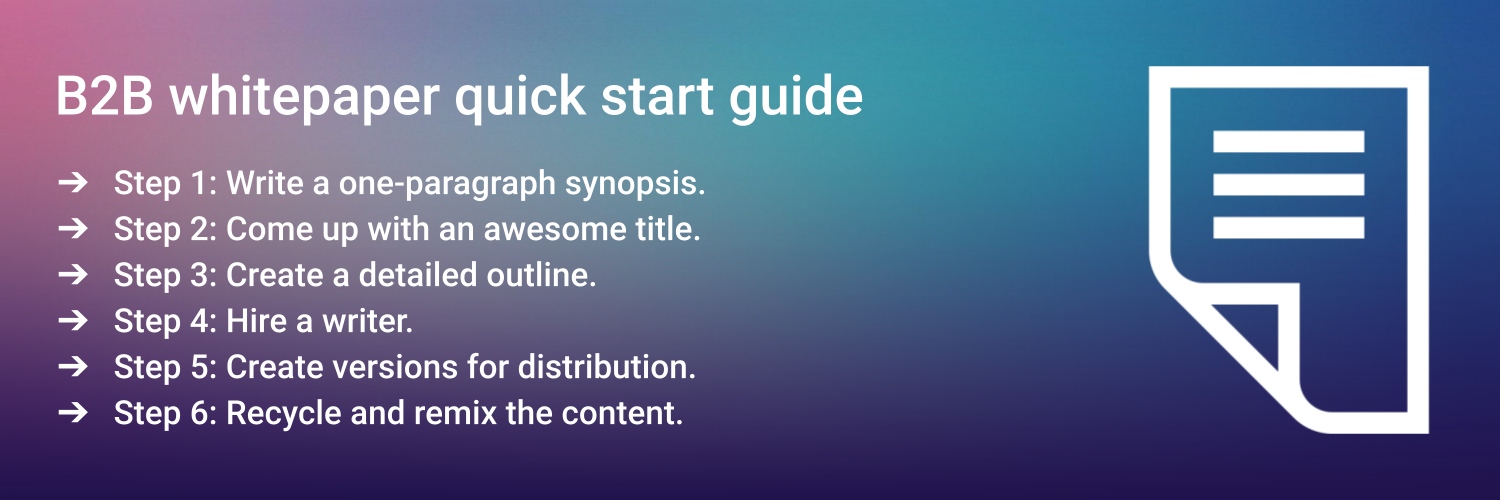A quick start guide to B2B whitepaper development and distribution
Writing a B2B whitepaper can be daunting for many, but they are essential for driving lead generation and creating content for thought leadership.
And once they are written, what’s even more problematic is that distribution is usually an afterthought.
After watching teams struggle with content marketing and whitepaper development, I put together this quick start guide to help teams create and distribute a whitepaper that will inform their target audience and drive inbound leads.
Step 1
The first step is to write a one-paragraph synopsis and brief that summarizes the whitepaper, who it is for, and why this information is essential to them. Remember, the critical question is, "Why would someone want to download this?"
Step 2
Come up with an awesome title. A good title is critical to making a good first impression. It's essential to a whitepaper's success. Make it descriptive, and explain the content's value to your audience. Long titles are fine. They can be necessary if you have a complex topic. You will also want a descriptive sub-head as well.
Step 3
Create a detailed outline. Plan each section or chapter as a separate blog post. The more detail you can include in the outline, the better. It doesn't all have to be text; diagrams, images, or links to inspiring content will also work. You will also want to determine who is the internal subject matter expert (SME) for each chapter or topic.
Step 4
Hire a writer. While this is optional, a professional writer will help you avoid jargon and make your content accessible. Have the writer (or you) review the outline and then prepare questions to interview each SME. They should record the interviews and write the post for the SME to review. This method will save everyone time by ensuring that the writing is consistent and the information is accurate, even if you use different SMEs for different sections.
Step 5
Create versions for distribution. Since each chapter was written as a blog post, you should release each chapter on your company blog with a link to the full whitepaper at the end of the post. You also should create versions of each chapter that you can release on the social media platforms you support. These tend to be shorter as there are character limits on LinkedIn posts. I also recommend Twitter threads be at most 12 tweets.
Step 6
Recycle and remix the content. As part of your content planning, find new ways to reuse the content, like publishing chapters on third-party blogs or trade publications. You should also consider Medium, Discord, Reddit, and Quora. Lastly, you will want to remix chapters from different whitepapers into new whitepapers that you can promote through your channels. You can call it a "best of" or a highlight reel of your most popular content.
